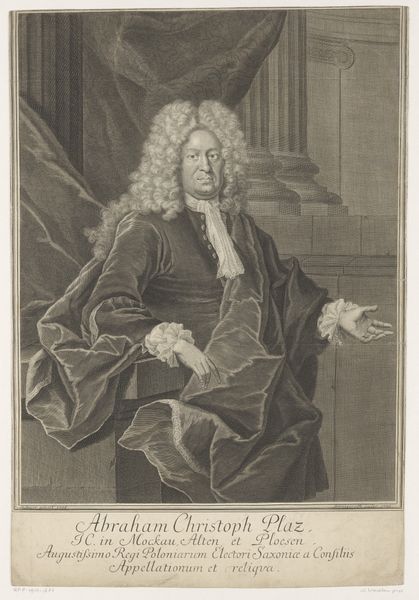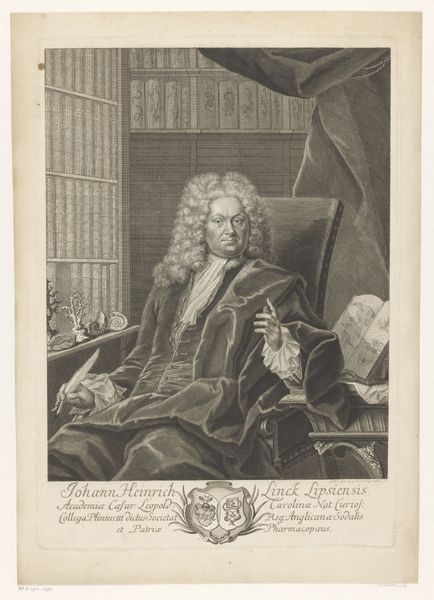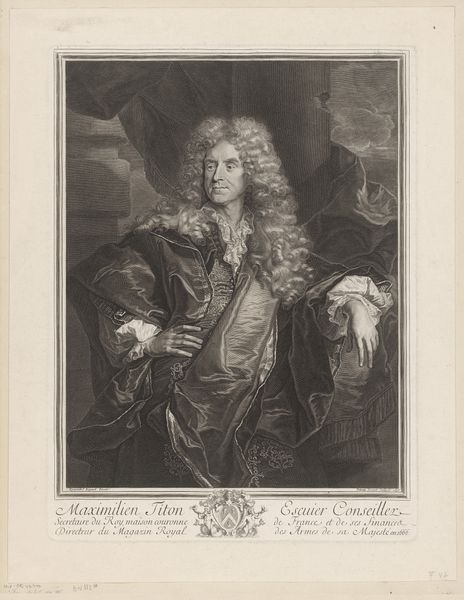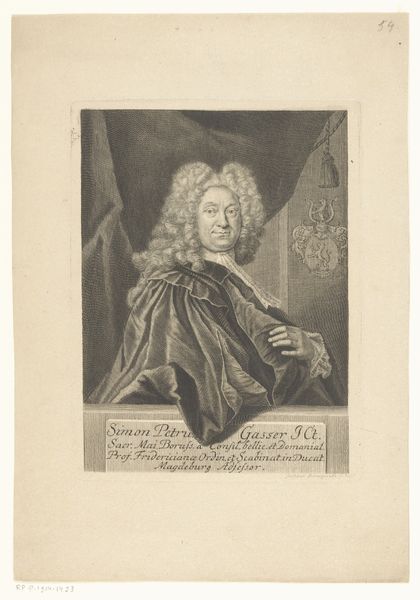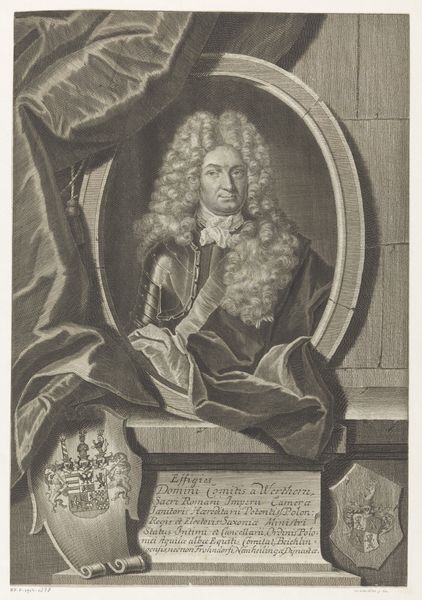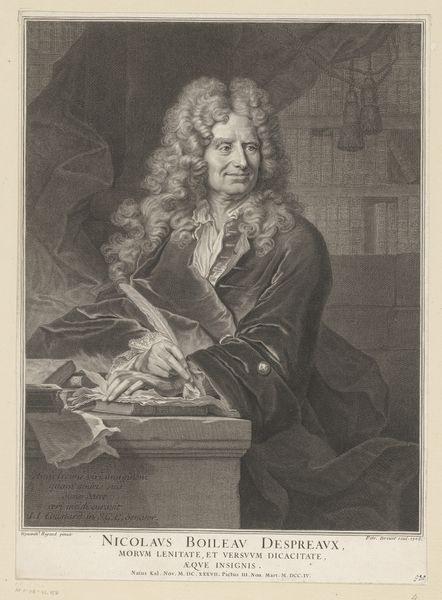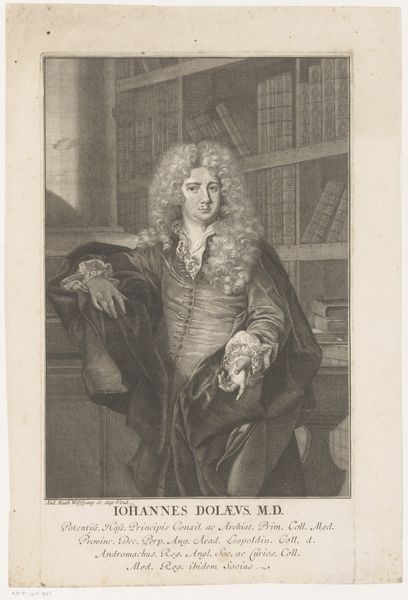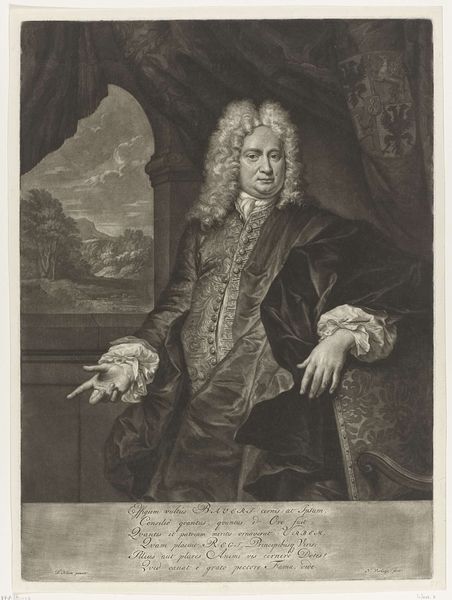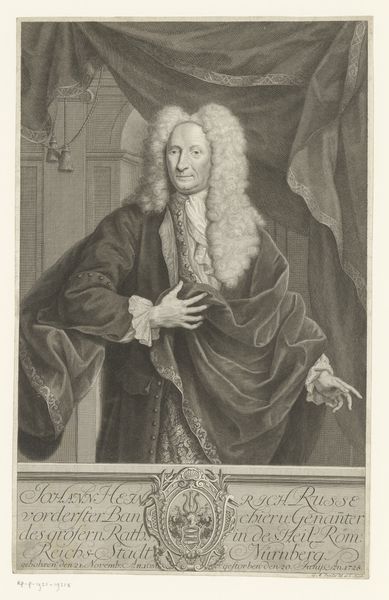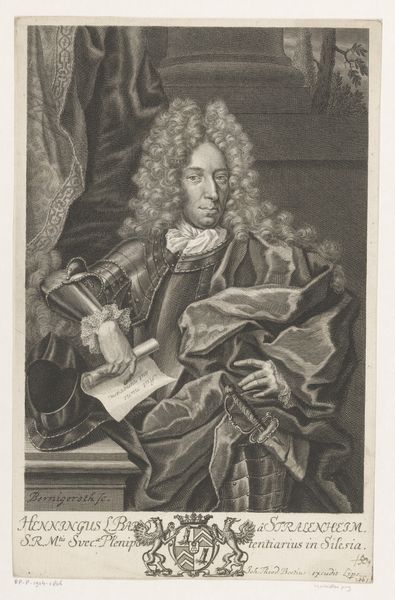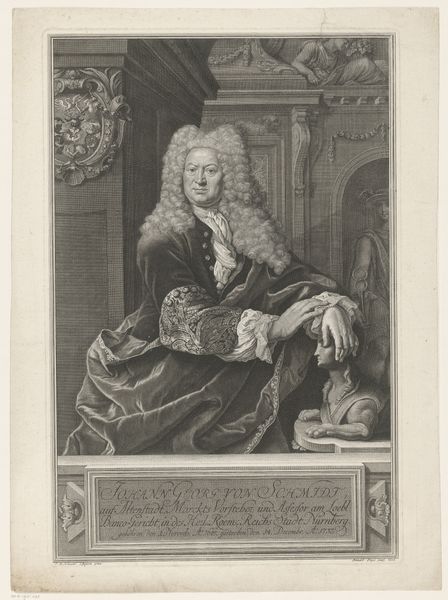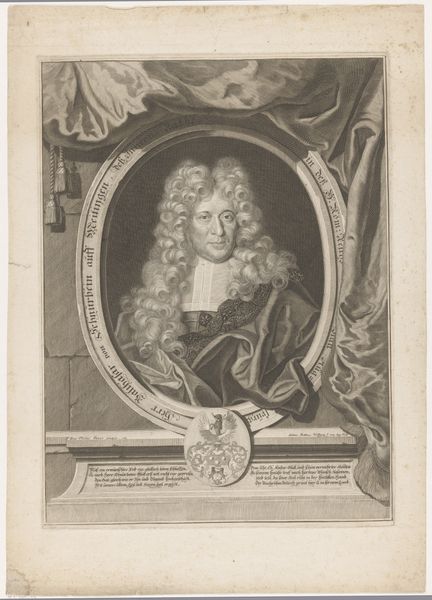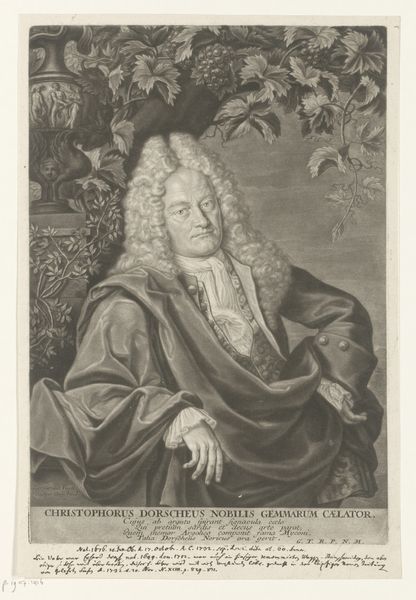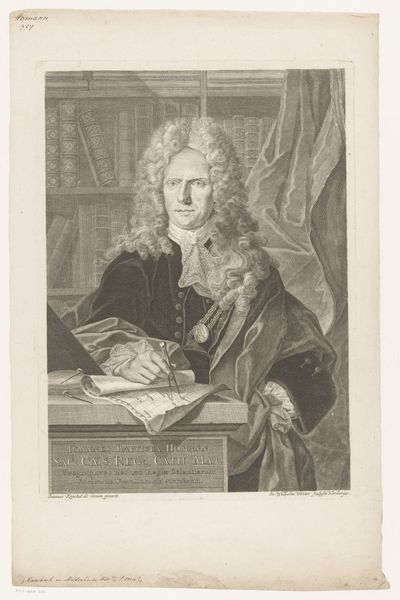
Dimensions: height 429 mm, width 300 mm
Copyright: Rijks Museum: Open Domain
Editor: This is "Portret van Theodor Oertel," an engraving by Martin Bernigeroth from after 1721. The detail is incredible, but it’s such a formal portrait. What do you see when you look at it? Curator: This portrait speaks volumes about the construction of power and identity in the Baroque period. We see Oertel posed with markers of status – the elaborate wig, the fine robes, the architectural backdrop – all serving to legitimize his authority. But what about the politics embedded in such visual representations? Editor: Politics? I was just thinking about the artist's skill. Curator: Precisely. Think about who had access to portraiture at this time. It was largely limited to the elite, reinforcing existing social hierarchies. How does this image contribute to the perpetuation of those power structures? Editor: I see your point. The portrait immortalizes Oertel and reinforces his place in society, something that wasn't accessible to everyone. It's like visual propaganda for the elite. Curator: Exactly! And consider the artistic conventions of the Baroque era, the emphasis on grandeur and spectacle. These weren't merely aesthetic choices; they were tools used to project an image of dominance and control, influencing how viewers perceived the sitter's power. Who gets to control how history remembers them? Editor: Wow, I hadn't thought about it that way. Seeing art as a tool for social control opens up a whole new way of understanding history. Thanks! Curator: My pleasure. It’s about moving beyond the surface to excavate the ideologies at play. Let's continue to ask these questions, challenging traditional interpretations and giving voice to marginalized narratives within art history.
Comments
No comments
Be the first to comment and join the conversation on the ultimate creative platform.
